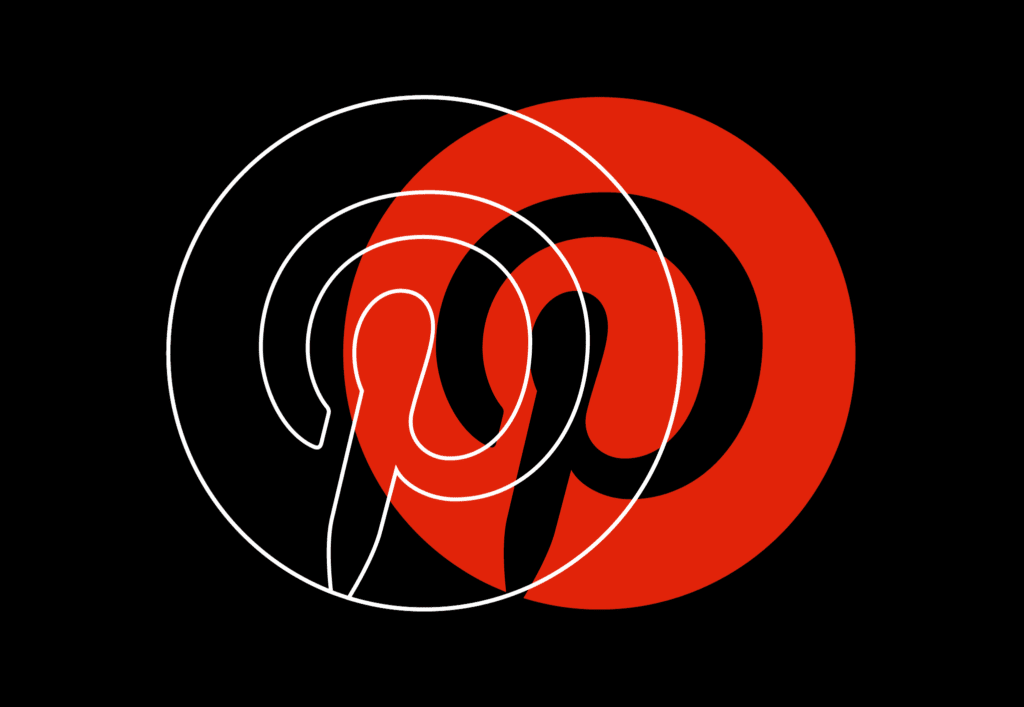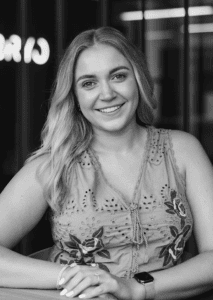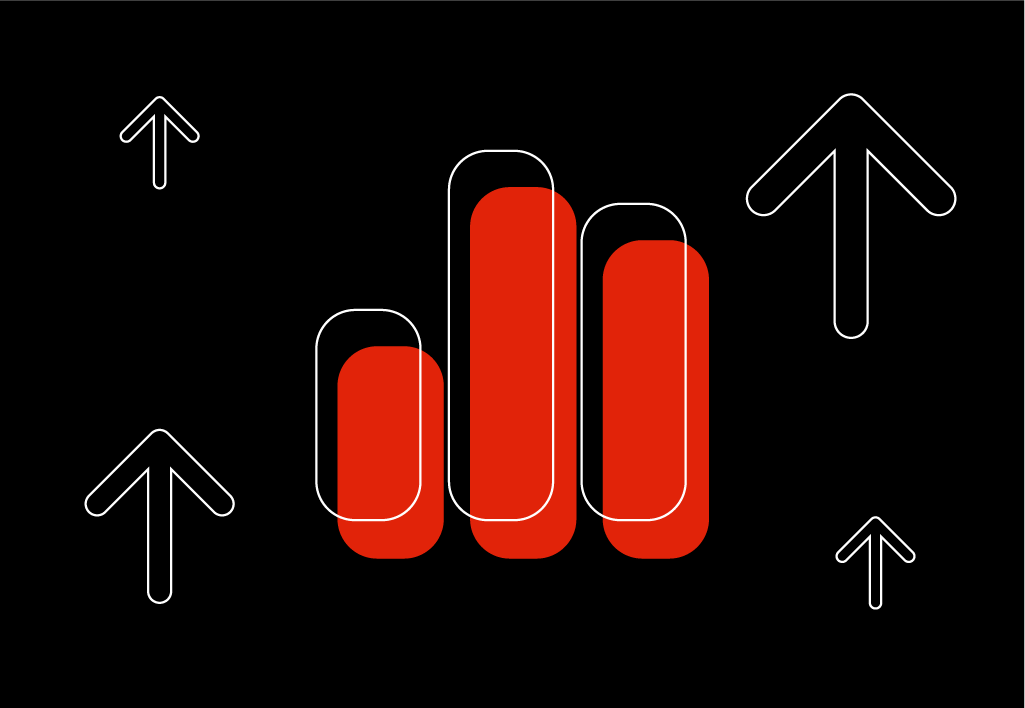TOTUM: More sign-ups, less spend
-
50%
increase in PPC conversion value

Pinterest is often overlooked as a paid social advertising platform compared to its counterparts Meta and TikTok. But with over 522 million monthly active users worldwide and 87% of these users influenced to make purchases on the platform, there’s a key audience of customers on Pinterest waiting to buy.
Pinterest for business is a powerful tool for not only increasing a business’s brand awareness and driving website traffic but also, and perhaps not as well known, it’s a fantastic online tool for increasing sales.
Unlike other platforms, Pinterest has some of the highest buying intent from its users. The people on Pinterest are ready to purchase; it’s as simple as that. This makes Pinterest a viable, stand-alone e-commerce platform and somewhere that your business can leverage.
As an award-winning digital marketing agency specialising in creative campaigns powered by technical excellence, we view Pinterest as so much more than an inspiration board. Get in touch with us and start your Pinterest marketing journey today.
Often overlooked in the world of social media marketing, Pinterest is an image-sharing platform that allows users to visually share, discover and categorise ideas. Essentially a digital mood board.
Unlike other social platforms, filled with content from family, friends, and influencers, Pinterest is known for being a platform of discovery where users can be inspired or plan. Whether it’s their next party or event, wedding, seasonal wardrobe or home interior, Pinterest users are actively seeking inspiration and are therefore more likely to spend their money on products advertised to them.
For brands in the home and interior industry, fashion, and general e-commerce, Pinterest advertising is an ideal solution.
With our expertise, utilising Pinterest as one of your social media marketing channels will enable you to appeal to a wider audience and build your online presence.
Array
(
[section_id] =>
[margin_top] =>
[margin_bottom] =>
[padding_top] =>
[padding_bottom] =>
[enable_form_cta] => 1
[enable_image_full_height] =>
)
Pinterest pins can be placed in your target audience’s home feed, category feed or relevant search results. Similarly to the other paid social platforms, with Pinterest you choose a campaign objective that reflects your business goals and then bid in the relevant ad auction to place your pins.

Jenny Byrne
Senior Paid Social Manager
On Pinterest, you should choose a campaign type that aligns with your campaign objectives and business goals. If you want to increase video views, Pinterest has the option of a video view campaign. This will optimise your ad towards quality views, play times and completion rates to get your message across in video form. Other campaign types include consideration (traffic) campaigns, conversion campaigns and catalog sale campaigns.
Whilst Pinterest’s targeting capabilities mirror that of other platforms in terms of finding certain age demographics, targeting via device and of course – by location, the ability to target users through interests, hashtags and categories sets the platform apart and helps you find the most relevant users to your product or service.
Pinterest ads work so well because they blend seamlessly with the authentic organic content on the feed. Image quality is key when it comes to Pinterest marketing. Lifestyle content, aesthetically pleasing photography and carefully curated graphics that will stand out are vital to Pinterest’s success. It’s a visual platform so high-quality content is a must.
Creating beautiful content is only the beginning. Your target audience needs to be able to find it. Take a look at key trends within the platform and think out of the box when reaching your audience. For example, if you sell bedding, don’t just consider home decor interests, think about what else your wider audience may be searching for.
You can reach your audience via keywords or interests. Keep an eye on trends and audience insights to gain an understanding of who your audience is and how you can reach them.
One of the benefits of using such a visual platform is that it enables businesses to tell a story and educate their audience on their brand and products.
When done correctly, Pinterest advertising can be a fantastic tool to drive website traffic and increase your online sales. The platform is made for storytelling and allowing users to find your brand, but there are ways you can take your audience engagement to the next level and convert them to website visitors and even customers.
Undertake keyword research and use relevant Pinterest ‘trends’ to reach your audience on the platform but then leverage rich pins, share blog content and regularly to ensure your audience is engaged.
You must ensure your content is ‘pin-worthy’; the more interesting your content is to your audience, the more likely they will visit your website.
Building a loyal community is an important factor in Pinterest success.
You should create organised boards that allow other users to view your products in categories and collections that work well together. Making your profile easy to navigate and creating regular content is a great way to keep your followers engaged and maximise your potential to reach new audiences.
Use your platform to share not just your product, but answer any frequently asked questions and share relevant blogs. Having influencers or sharing UGC (user-generated content) as a part of your social media strategy is a great way to add an element of social proof to your offering.

Our award-winning team have created numerous successful campaigns for a range of clients across different industries. Below we have outlined two key successes:
Home interior client: By making the most of Pinterest’s advertising tool Performance+, we generated a ROAS of 8.14 in the first month for this campaign type alone, increasing the overall ROAS on the account by 12%.
When using hashtags and interest targeting for the different seasons of Autumn and Christmas, we were able to see the following results for one of our home retail e-commerce clients:
Like any social media platform, the more you use it, the more chance you have of success. The more you pin high-quality, relevant content on the platform, the more chance you have of getting your content in front of potential customers and the more likely they are to follow your account.
Create organised boards so users can easily find your content and keep them updated with new products or blog posts so the board followers remain engaged.
Utilising Rich Pins on Pinterest is a great tool for driving website traffic and online purchases on your website. Rich Pins are a type of pin that is available to anyone on Pinterest with a business account.
If you have product, blog or recipe content on your website you want to create a rich pin for,, you’ll need to add rich meta tags to those web pages. To ensure the content is pulled through correctly, you will then need to ‘validate’ your page on Pinterest. Approval for this can take up to 24 hours, but once it is complete, you will be able to create rich pins for each web page you have tagged.
One of the main things to consider when creating pins is the image. Not only does it need to be high quality and ‘pin-worthy’, but Pinterest images that look like organic posts tend to work better. Businesses that use overly ‘salesy’ images with heavy test use or excessive USP’s stick out like a sore thumb when scrolling through the feed. As a visual platform, it’s vital that your ads and organic pins match the style of the rest of the content on there.
Another thing to consider is the image size. The optimal pin size, recommended by Pinterest, is 1000 × 1500 pixels. However, users can also opt for any dimension that falls within the ideal Pinterest image size of a 2:3 aspect ratio.
When you create your post, consider how much of the feed you want your image to take up. A long pin is a great way of showcasing an infographic or a blog post, whereas creating a square pin can be perfect for product images or lifestyle photography.
Standard pin size on Pinterest: 2:3 aspect ratio; 1000 pixels wide x 1500 pixels tall
Square pin size on Pinterest: 1:1 aspect ratio; 1000 pixels wide × 1000 pixels tall
Long pin Size on Pinterest: 1: 2.6 aspect ratio; 1000 pixels wide x 2100 pixels tall
As content marketing specialists, we’re masters at creating effective and optimised copy that packs a punch. Pinterest descriptions are the copy that adds context and clarity to your pin. You can create a description for both individual pins and the boards you create, these should be keyword rich and detailed.
When writing your descriptions, think about how you can leverage this space to increase your reach, engagement and traffic. Be mindful of Pinterest SEO! Pinterest allows a maximum of 500 characters for descriptions. It’s important to use this limit to include keywords, an engaging call to action and a clear description of your content. Note that only 30-60 characters will show in the feed, so make sure you bet your main points in early to make your pin more engaging.
Why show just one image when you can show many? Carousel pins offer businesses the opportunity to showcase different elements of their products, advertise a collection of products at the same time or create a brand awareness piece and tell your brand story.
Users can see your carousel pins in the feed, just like they would any other pin, however, they can swipe through the different cards in your carousel directly, or if they click your pin, they will swipe through each image and be directed to your website.
Anyone with a business account can create a carousel ad, simply go into the ad manager and create a new pin.
Circling back to the earlier point about the negative impact of businesses creating overly salesy pins. This doesn’t necessarily mean that your image content shouldn’t include any copy overlay. For example, if you are sharing a blog post or a recipe, it will be worth adding a title to your image so it’s clear what you are pushing. Similarly, if you are pushing a specific sale, it may be worth including the sale title on your product images, again though, it’s important to make it look as much like an organic post as possible, you want your content to be aesthetically pleasing and ‘pinnable’ so your image should be the focal point of the pin as opposed to the text overlay.
The Pinterest ‘pin it for later’ button, also known as the save button or pin it button, is a tool you add to your website to allow users to easily share your content on Pinterest.
Essentially a Pinterest logo that appears on images on your website allows users to click and save your image or article to their Pinterest boards. The easiest way to implement this is to follow the Pinterest Developer’s instructions.
The benefit of implementing this onto your website is that the more people that share your beautiful images on Pinterest the more impressions and therefore traffic you are likely to get. In addition, if a user is at the exploration or evaluation stage of their purchase journey, saving your content shows that not only is your content engaging, but that the user is more likely to come back to your website when they are ready to purchase.
Pinterest can be a great driver of traffic to your blog posts. Creating themed Pinterest boards and making them keyword-rich and optimised for Pinterest SEO will allow your target audience to easily find your content and in turn, visit your blog posts.
When creating both the pin and the board, ensure you are using as many relevant keywords as possible when naming your boards and creating the descriptions. You can take a lot of the same information from your blog for this to make it as relevant to the shared content as possible.
This can also help you decide what else to feature on your board. You could do a blog-specific board, a ‘round up of this month’s blogs’ or ‘everything you need to know on x’ or you could incorporate the blog into a themed board. If you’ve done a ‘what to wear this autumn’ blog, you could add this to a board showcasing relevant products and inspiration. As long as you keep your keywords relevant in the descriptions and titles, your board will reach the right audience.
To make the most of this powerful e-commerce platform, you need to work with experts who know how to create ads that deliver: get in touch today.

I'd recommend Embryo to anyone looking for digital marketing services. I've worked with Embryo on a wide range of tasks and can truthfully say the team will unfailingly go above and beyond to help you out. They're genuinely knowledgeable, talented people really willing to help.
increase in PPC conversion value
viewings booked through PPC
A best in class website to demonstrate expertise and build trust
increase in accepted cases